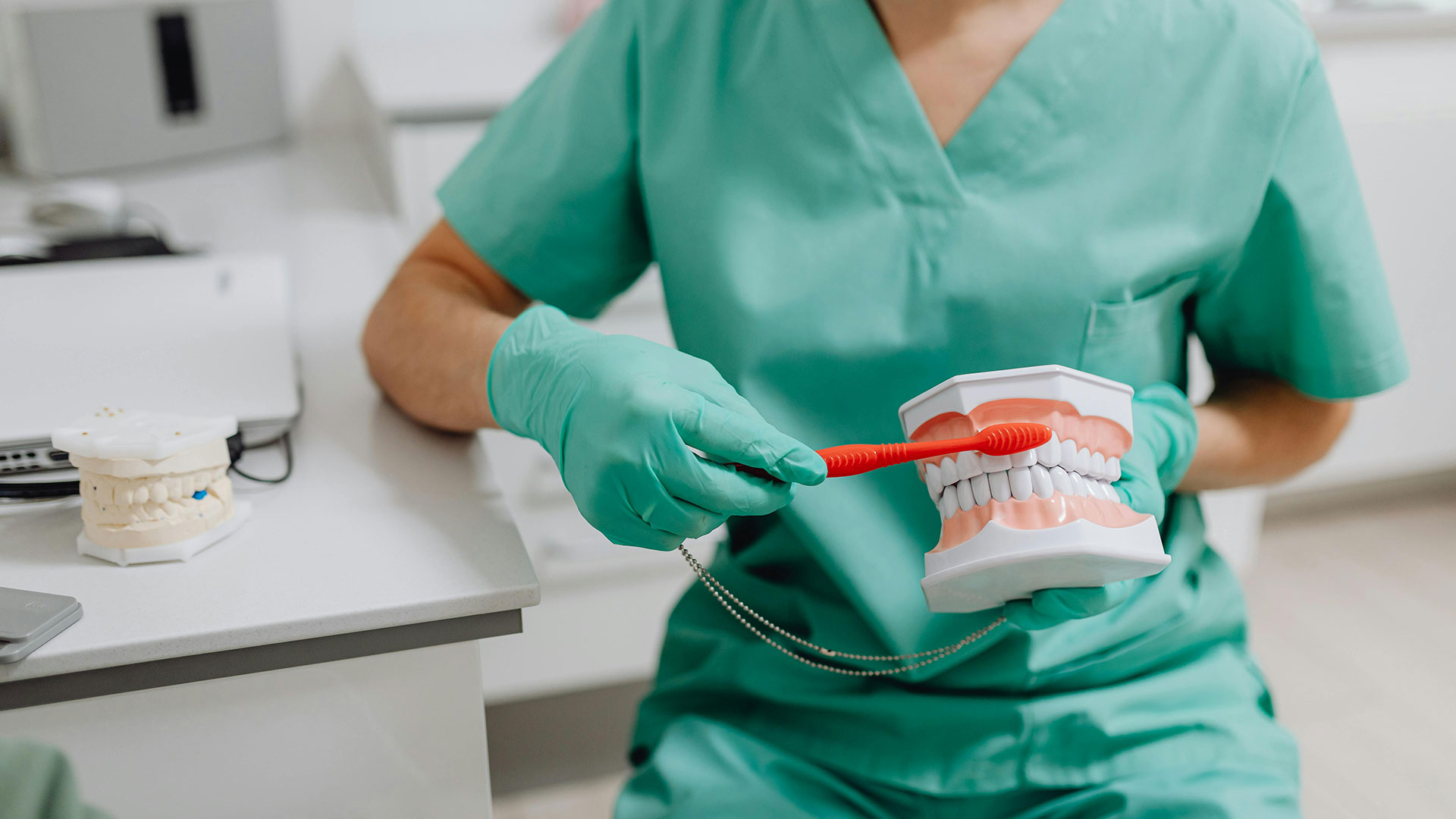T1D complications

Type 1 diabetes and complications
Living with type 1 diabetes (T1D) brings with it the risk of complications. But these can be mitigated if you know the signs to look out for and what you can do to reduce your risk.
It can be challenging to live with a long-term condition like type 1 diabetes, especially as it can increase your risk of developing health complications.
Not everyone will experience complications. If you do, there are treatments available to manage your symptoms to improve how you feel.
What are the most common complications of type 1 diabetes?
The parts of the body that can be most affected by diabetes complications are nerves, kidneys, eyes, feet, heart and blood vessels, and gums.
How can I prevent type 1 diabetes complications from developing?
Keeping your blood glucose levels in your target range is one of the best things you can do to avoid complications, but blood glucose levels are affected by lots of different things. This includes food and drink, medicines, illness, activity and stress.
Some days you will do the same as the day before, but your levels could be completely different. Try your best to stay within your targets, but don’t be hard on yourself if you have a bad day. Be kind to yourself and get support from your diabetes care team if you need it.
While complications can sometimes be outside of your control, there are steps you can take to reduce your risk.
As well as keeping your blood glucose levels stable, controlling your blood pressure and cholesterol, and going to your diabetes appointments are other ways to lower your chance of complications.
Being physically active, stopping smoking and eating healthily will help to keep your blood glucose levels in your target range.
Be aware of your body and if you feel like something isn’t right, don’t wait. Speak to your healthcare provider or diabetes care team who can help.
How long does it take type 1 complications to develop?
Type 1 diabetes complications can develop over time and may start and progress at different rates in different people. Complications, such as damage to the eyes, nerves, and kidneys, may take years or decades to develop.
We want to be able to detect complications as soon as they start. Then they can be treated quickly and efficiently with treatments developed to work for people with T1D. Better still, we want to be able to find out who is most at risk of developing complications and protect them from getting them at all.

Nerves carry signals between your brain and other parts of your body so that you can move, feel and control your body. Over a long period of time, high blood glucose levels can cause damage to your nerves.
Types of diabetic neuropathy
There are different types of nerve damage, also known as diabetic neuropathy, including:
- Peripheral neuropathy, affects the feet, legs, hands and arms
- Autonomic neuropathy, damage to the nerves that help your body to function, like the digestive system
- Pressure and bladder control
- Sensory neuropathy, responsible for transmitting sensation, such as pain and touch
- Motor neuropathy, damage to the nerves responsible for controlling muscles
If left untreated, nerve damage can cause problems in many different parts of the body.
Symptoms can be treated but damage can’t be reversed. By managing your T1D the best you can, you can reduce the risk or stop further damage.
Symptoms of diabetic neuropathy
The symptoms of diabetic neuropathy will depend on the type of nerve damage you have.
Common symptoms include numbness, tingling or sharp pains in the feet, legs, arms or hands. You might experience pins and needles, a loss of sensation or burning. These symptoms can keep you awake at night.
You could experience a loss of bladder control, an irregular heartbeat, muscle cramps or a lack of sweat.

Gastroparesis is a type of autonomic neuropathy where the stomach can’t empty in the normal way. Damage to the nerves means food passes through the stomach slower than usual. This can cause unpredictable blood glucose levels or your body to not get the nutrients it needs.
Getting diagnosed with diabetic neuropathy
Your healthcare provider will ask you questions about your symptoms, examine you and may arrange for further testing. Your nerves should be checked in your annual diabetes review, but if you experience any symptoms of nerve damage, don’t wait for your annual checkup. Speak to your healthcare provider immediately to be assessed.
Reducing your risk of diabetic neuropathy
Try and keep your blood glucose levels within your target range as best you can to help reduce your risk of nerve damage. As well, take good care of your feet and check them daily if possible. That way you’ll notice any cuts or wounds early, which you might not feel.
How is diabetic neuropathy treated?
Nerve damage can’t be reversed so catching it early is important to help stop it from getting worse. There are treatments to reduce the symptoms of nerve damage depending on the type of neuropathy you have. However, it can take time for treatments to help the symptoms.

People with T1D are at a higher risk of developing kidney problems, called nephropathy.
Your kidneys act as a filter to cleanse the blood and get rid of waste products. High blood glucose levels and high blood pressure can cause damage to the kidneys.
When the kidneys are damaged, they won’t work properly. It means other organs, like your heart, must work harder and it can put extra strain on them.
Spotting the signs of kidney damage
As part of your annual diabetes checkup, you should be offered a urine test and blood test. These monitor the health of your kidneys and see how well they are working.
Physical symptoms may appear when kidney damage is more advanced. Symptoms include:
- Tiredness
- Swollen ankles, feet or hands
- Shortness of breath
- Feeling sick
- Blood in your urine
- Foamy urine
Getting diagnosed with kidney damage
A blood test identifies the level of a waste product called creatinine and estimates your glomerular filtration rate (eGFR). This calculation is how many millilitres of waste your kidneys should be able to filter in a minute.
The urine test looks for signs of any proteins or blood. Together with your blood test, it gives a more accurate picture of how well your kidneys are working.
If you’re experiencing any symptoms of kidney damage, contact your healthcare provider as soon as possible.
Reducing your risk of kidney damage
Other ways you can reduce your risk:
- Keep your blood glucose levels in your target range as best you can
- Manage your blood pressure where possible
- Avoid smoking
- Keep physically active
- Eat healthily and reduce your salt/sodium intake
Treatments for kidney damage
There are treatments to help relieve symptoms and stop it from getting worse.
The first option for treatment is usually to get your blood pressure under control using medication. You may also be offered diuretics, which help your body get rid of excess fluid. If your kidney damage is more advanced, it’s called chronic kidney disease. But there are still treatments that can help this condition.
JDRF through the T1D Global Fund is supporting diabetic kidney disease research. JDRF-funded researchers in Australia have identified specific genes in people with T1D that can predict the development and progression of diabetic kidney disease.
Other JDRF-funded research in the UK has found biological markers that are early signs that someone is starting to develop diabetic kidney disease. This crucial finding could help doctors diagnose people with kidney damage earlier and start treatment to help prevent further damage.

There’s a greater risk of developing eye problems when you have type 1 diabetes. Attending regular eye screening and being aware of any changes to your vision, whatever your age, will help to catch any problems early.
Type 1 diabetes can affect your eyes in many ways. Problems can be caused by a lack of blood supply to the eye or damage to the vessels. Attending regular eye screening and being aware of any changes to your vision, whatever your age, will help to catch any problems early.
The complications you may experience include:
- Diabetic retinopathy, where blood vessels in the retina become damaged
- Diabetic maculopathy, the central part of the retina develops leaky or blocked blood vessels
Untreated eye problems can cause vision loss. However, it usually takes several years for eye problems to reach this stage. Managing your diabetes and your overall health can help reduce your risk of developing eye problems.
What is diabetic retinopathy?
The retina at the back of the eye needs a constant supply of blood. Persistently high blood glucose levels can damage the blood vessels in your eyes. This is called diabetic retinopathy.
There are three stages of diabetic retinopathy:
- Background retinopathy – where tiny bulges in the blood vessels may bleed but this does not usually cause problems with your vision
- Pre-proliferative retinopathy – changes happen to the blood vessels, causing substantial bleeding into the eye
- Proliferative retinopathy – the retina develops scar tissue and new blood vessels, which bleed, and cause some loss of vision
What is diabetic maculopathy?
When the central part of the retina, called the macula, develops leaky or blocked blood vessels, this is called diabetic maculopathy or diabetic macular edema. It’s a type of retinopathy. It can happen at any age and if you do experience diabetic maculopathy, you’ll experience poor vision in the centre of your eye. The vision at the side can remain normal. It can lead to permanent sight loss.
You’re unlikely to spot eye problems in the early stages yourself, so make sure to have your eyes checked annually by an optometrist.
It tends to take many years before vision loss happens, but it’s important to notice any changes to your sight including:
- blurred vision
- shapes floating in your vision (floaters)
- sensitivity to light
- gradual worsening vision
- sudden vision loss
- eye pain or redness
- difficulty seeing in the dark
If there are any changes to your sight, don’t wait for your eye doctor’s appointment. If a problem with your eyes is picked up early, treatment can stop it from getting worse.
Reducing your risk of retinopathy or maculopathy
There are things you can do to reduce your risk of developing eye problems. These include:
- keeping your blood glucose, blood pressure and cholesterol within your target levels as much as possible
- attending your screening appointments
- taking your medications
- getting medical advice from your diabetes care team quickly if you notice any vision changes
- having a healthy lifestyle including stopping smoking, maintaining a healthy weight and exercising
If you usually experience high glucose levels and bring them down over a short period of time, it can cause an advanced supply of blood to the vessels. If there is already damage, this can worsen symptoms and cause complications. It’s important to work with your healthcare team to drop your blood glucose levels safely.
Treatments for retinopathy or maculopathy
For more advanced stages of eye problems, the main treatments are eye injections, laser treatments and eye surgery. Your diabetes team will talk to you about the different options.
If your eye problems are in the early stages, you’ll get advice about managing your diabetes to help prevent vision loss.

People living with type 1 diabetes have an increased risk of developing foot problems. High blood glucose levels, blood pressure and cholesterol can reduce the blood supply to your feet, causing a loss of feeling or sensation in your feet. This increases the risk of wounds and cuts, particularly if they are slow to heal. Ideally, check your feet every day or get someone to help you. If you get a wound or a cut on your foot, you might not notice. These can develop into ulcers and infections. In the worst cases, this could lead to an amputation. But there are simple things you can do to help catch any issues early.
Looking at your feet every day and trying to keep your blood glucose levels in your target range as much as possible can help prevent problems.
Spotting the signs of foot problems
Take the time to check your feet every day if you can. If you notice any changes to your feet, no matter how small, speak to your healthcare provider. If you have a foot care or podiatry team, you can contact them for advice.
Check your feet regularly for:
- cuts, cracks or blisters
- pain or tingling
- numb feet
- swelling
- wounds that don’t heal
- redness
- hot or cold feet, or one foot feels warmer than the other
- your feet not sweating
- hard skin
If you notice that your foot has changed shape or colour, or has become red, hot and swollen, speak to your healthcare provider or podiatrist straight away.
Reducing your risk of foot problems
If you can, check your feet daily as it can help you spot any changes or injuries that need to be treated.
Other things you can do include:
- keep your feet clean and dry to avoid infection
- wear socks as much as possible to avoid getting cuts
- wear shoes that fit well
- moisturize your feet daily but avoid rubbing between the toes
- avoid bare feet, especially in hot or cold temperatures
- Keep your blood glucose levels within your target range as best you can and try to manage your cholesterol and blood pressure. Stay as active as possible and eat a healthy diet.

When blood glucose levels are high for a long time, it can damage the blood vessels and nerves. People with type 1 diabetes are more likely to experience high cholesterol and high blood pressure. Both conditions cause damage to the blood vessels. If the blood can’t flow around your body as it needs to, it can lead to cardiovascular issues, and potentially a heart attack, stroke or other vascular issues. Having a healthy diet and lifestyle and regularly seeing your healthcare provider can help to mitigate these issues and catch them early.
Higher cholesterol or blood pressure can also cause a blockage of blood vessels to the legs and feet. This can lead to foot ulcers and infections. In severe cases, it can cause the loss of a toe, foot or lower leg.
Getting diagnosed with cardiovascular issues
Getting your blood glucose, cholesterol and blood pressure checked at least once a year should help manage your risk of developing problems with your heart and blood vessels.
Reducing your risk of cardiovascular issues
Keep your heart healthy by managing your blood glucose levels within your target range as much as possible. It also helps to control your blood pressure and cholesterol.
Eat a healthy and balanced diet and be physically active whenever possible. If you’re a smoker, you can get help to stop. Check your extremities and feet every day so you can spot any cuts and wounds and get them treated early.

Good dental care is important if you have type 1 diabetes as you’re more at risk of teeth and gum problems like gum disease, tooth decay and tooth loss. The extra glucose in your blood gets into your saliva causing germs and extra plaque and tartar build-up. There are simple steps to help keep your gums healthy and lower the risk of tooth decay or loss.
Know the signs of gum disease
Speak to a dentist if you notice any problems in your mouth like bleeding gums, bad breath or soreness. You might notice some gum recession, which can make your teeth look longer and have bigger gaps between them. Getting treatment early can stop serious problems from developing. If you experience any signs of gum disease, see a dentist as soon as possible. Spotting any issues early makes it easier to treat and less likely to lead to tooth loss.
Reducing your risk of gum disease
Having good dental hygiene and keeping your blood glucose levels in your target range will help to reduce your risk of gum disease. If you smoke, quitting will also help.
Keep your mouth healthy by brushing your teeth twice a day and visiting a dentist every six months. Flossing daily will also work to keep your teeth and gums clean.
Treatments for gum disease
The treatment for gum disease depends on how severe it is. You may need a deep clean under the gums, antibiotics, tooth removal or gum surgery.
Get support
Living with type 1 diabetes is a constant balancing act, and worrying about the risks of developing potential diabetes-related complications can lead to diabetes distress or potential mental health challenges. These risks can be mitigated and it’s important to be open and honest with your healthcare providers. Reach out to family members, friends or Breakthrough T1D’s support programs to be linked to other people living with T1D for connection.
If you are experiencing mental health challenges that require further care, you can reach out to a mental healthcare provider who has been specifically trained in supporting patients with diabetes here: directory.breakthrought1d.ca
Be easy and kind to yourself, not every day will be perfect, but with the right support and healthcare team, you can work towards reducing your risk of T1D complications, as Breakthrough T1D-funded research works concurrently to further reduce the risk of diabetes complications.
*Content taken in part and reworked from Breakthrough T1D UK